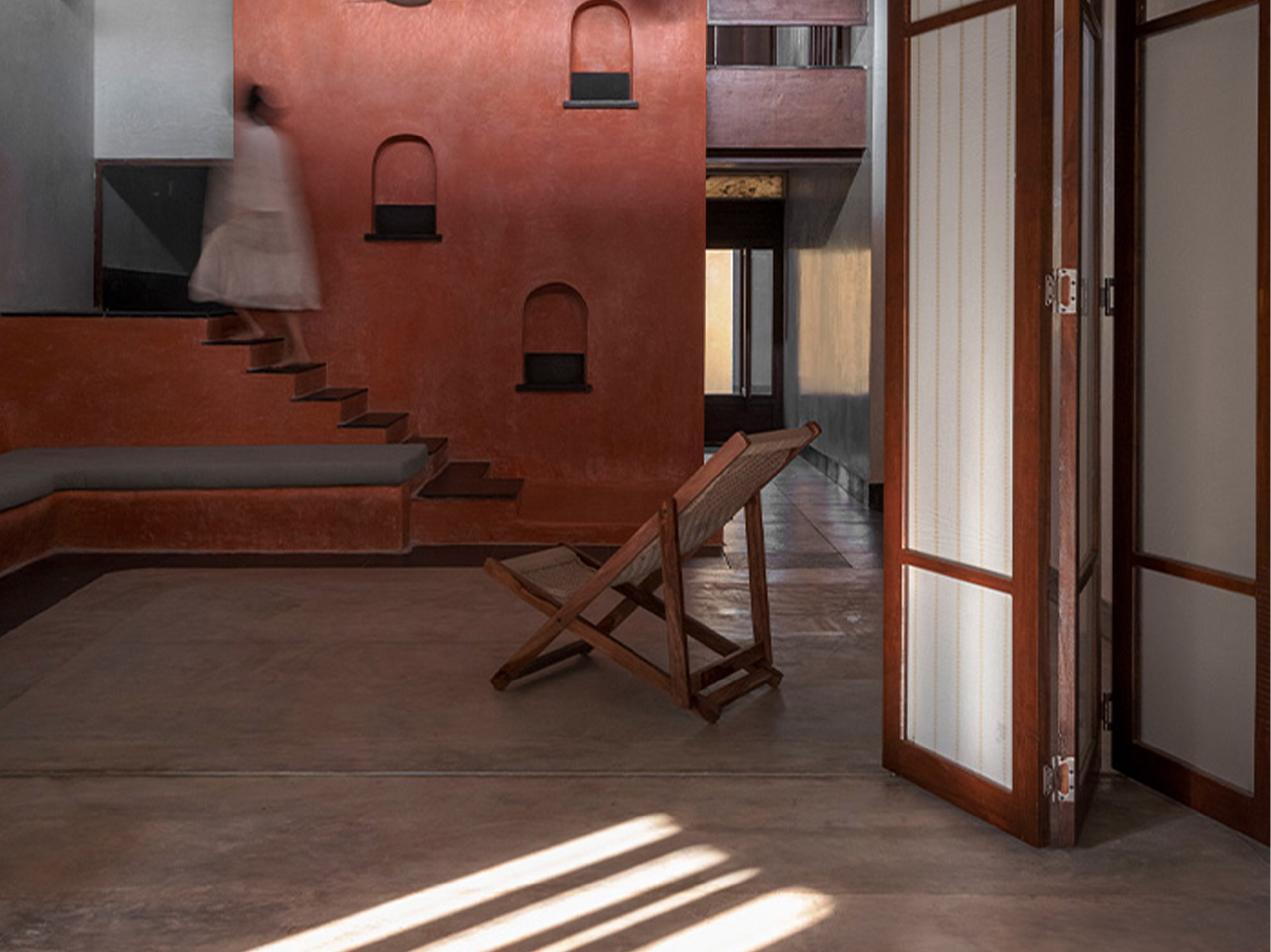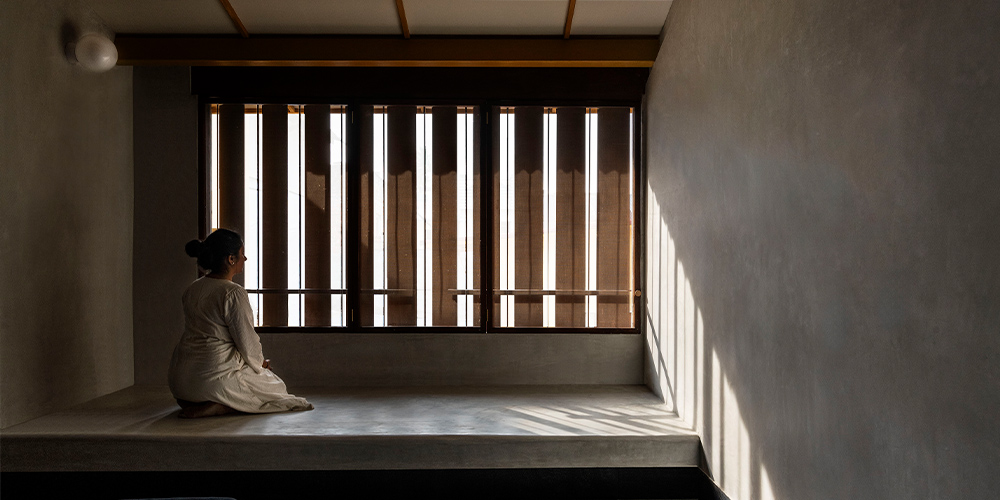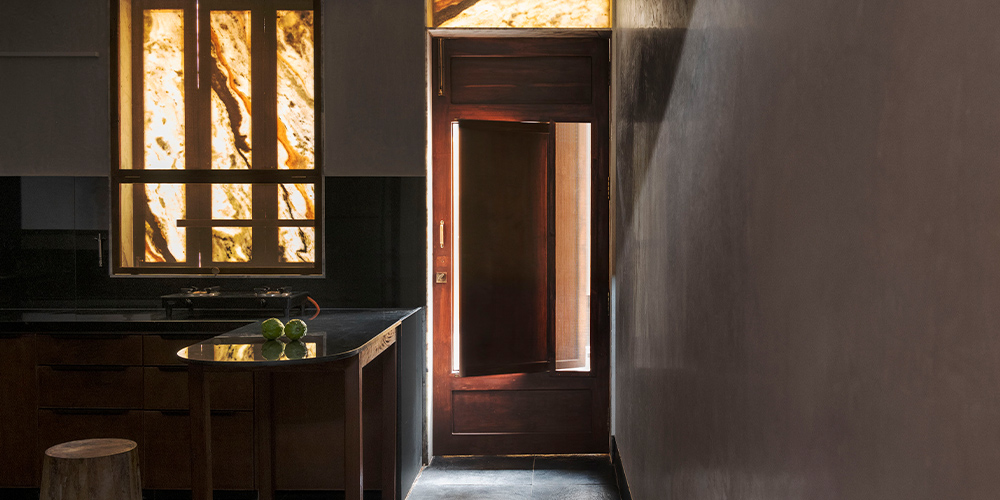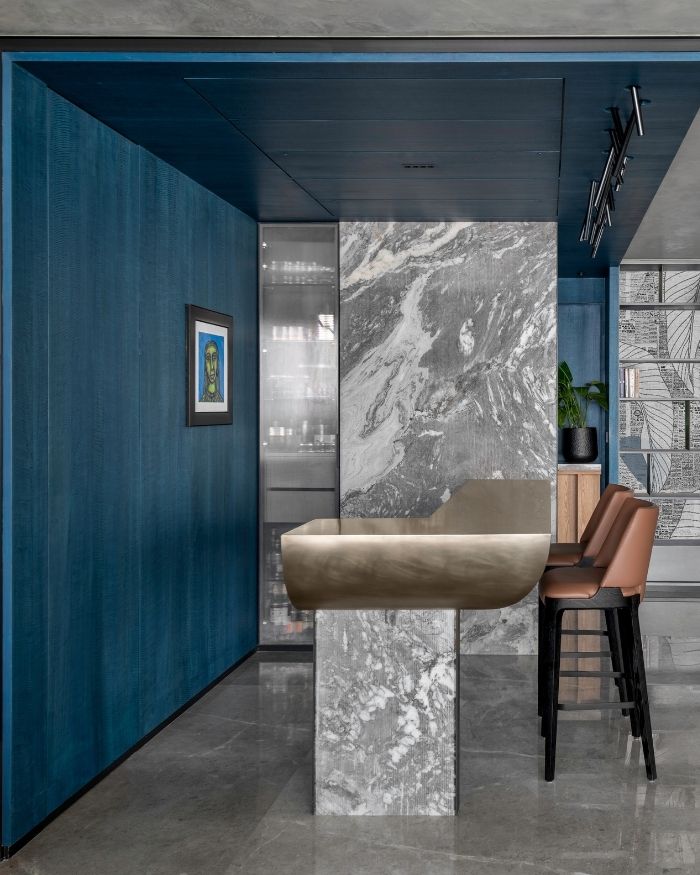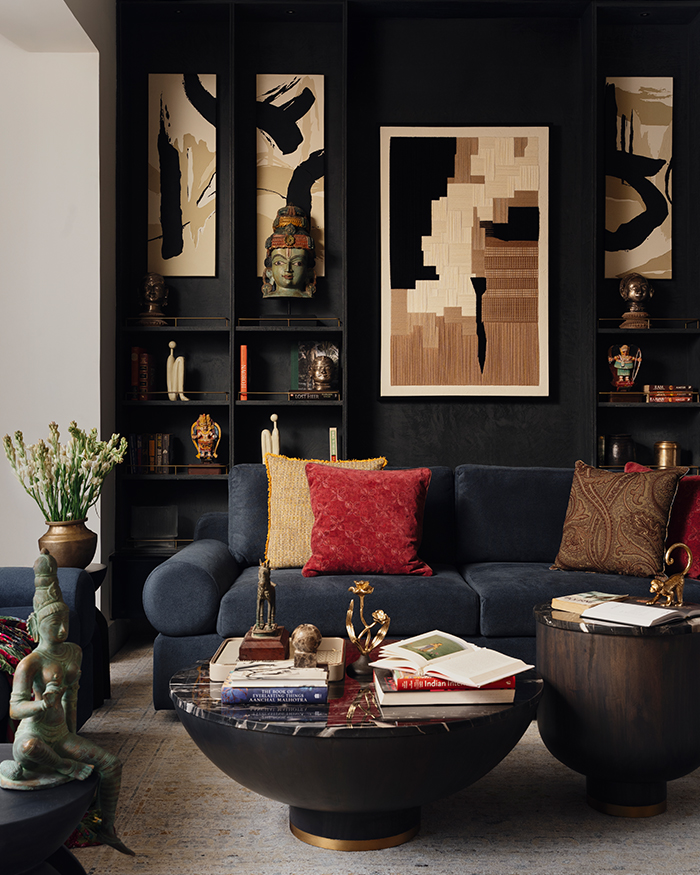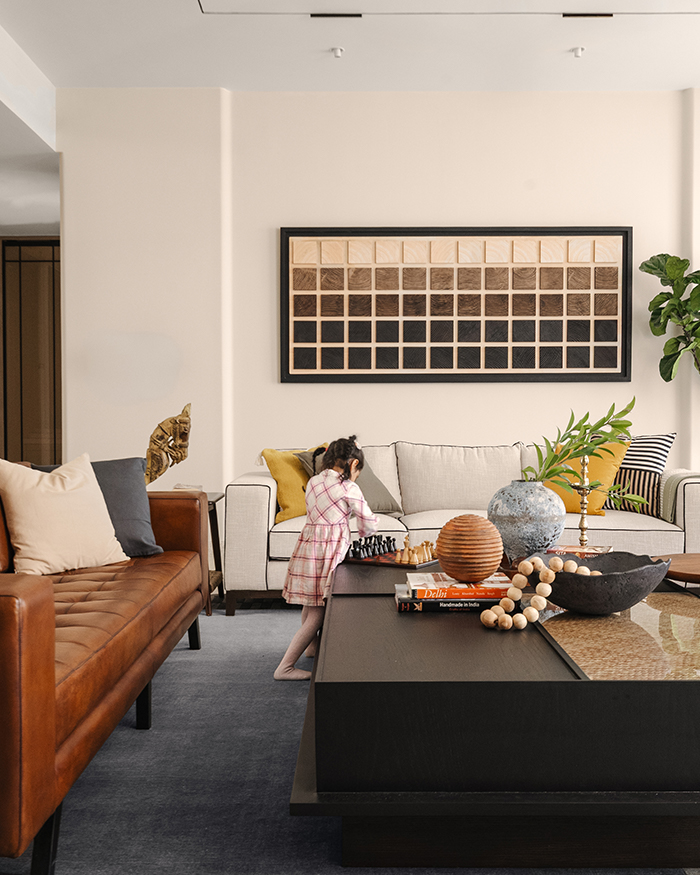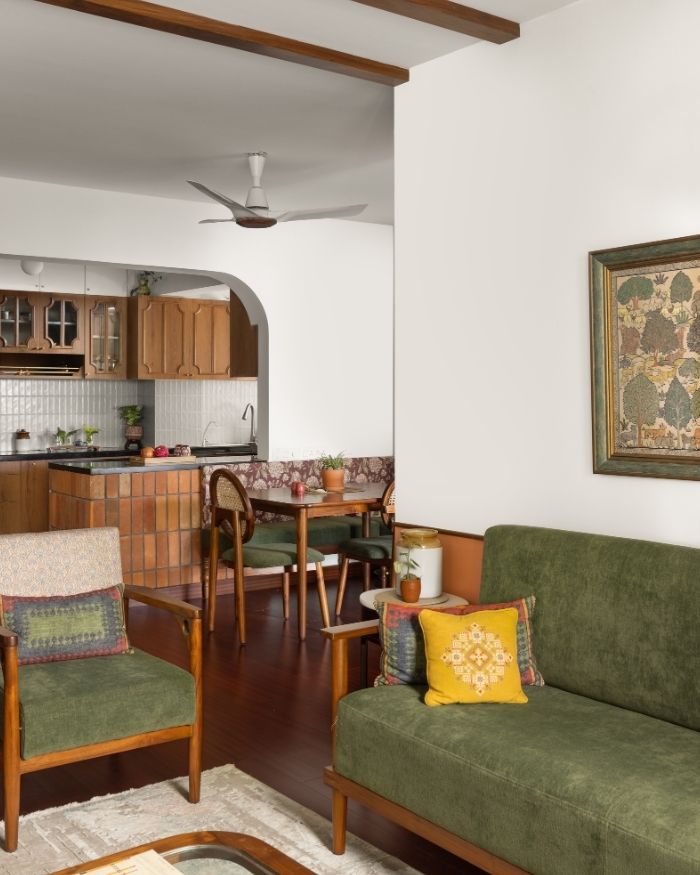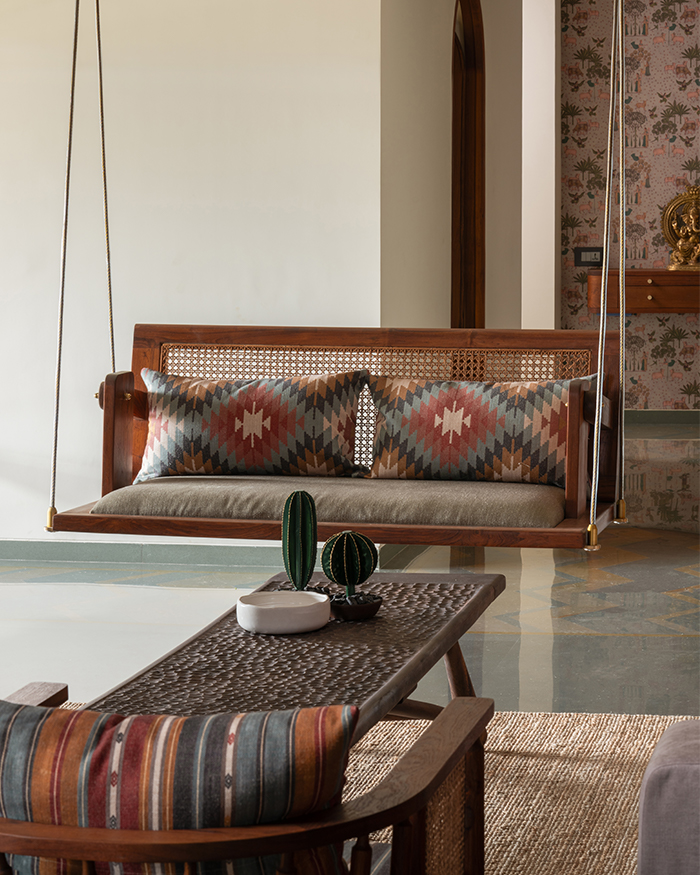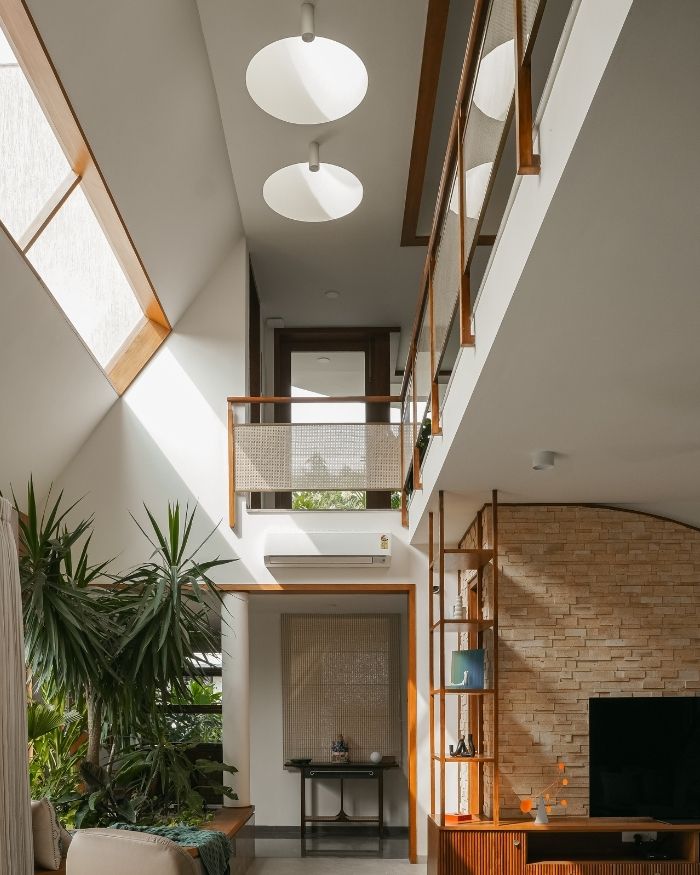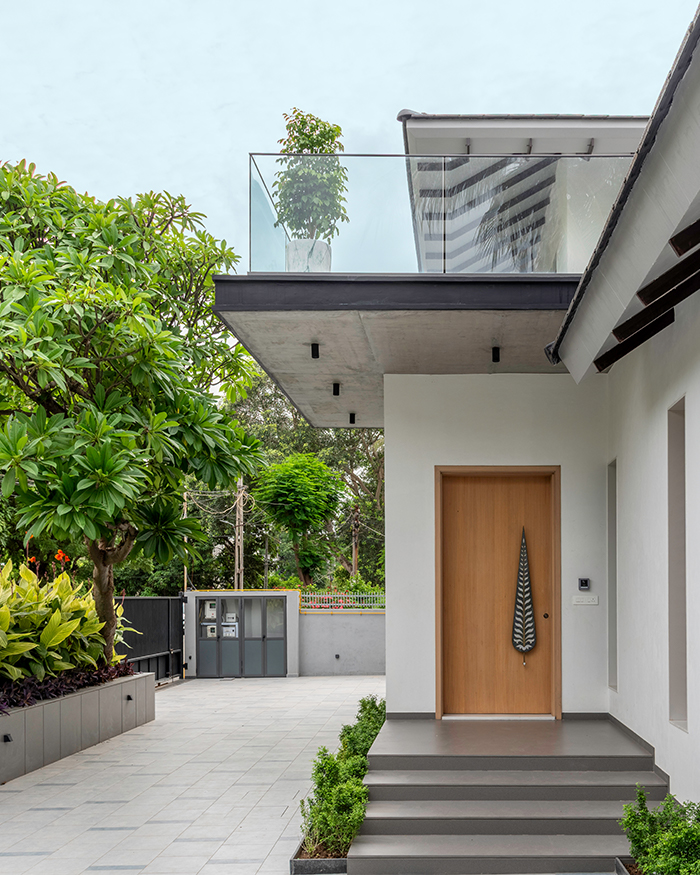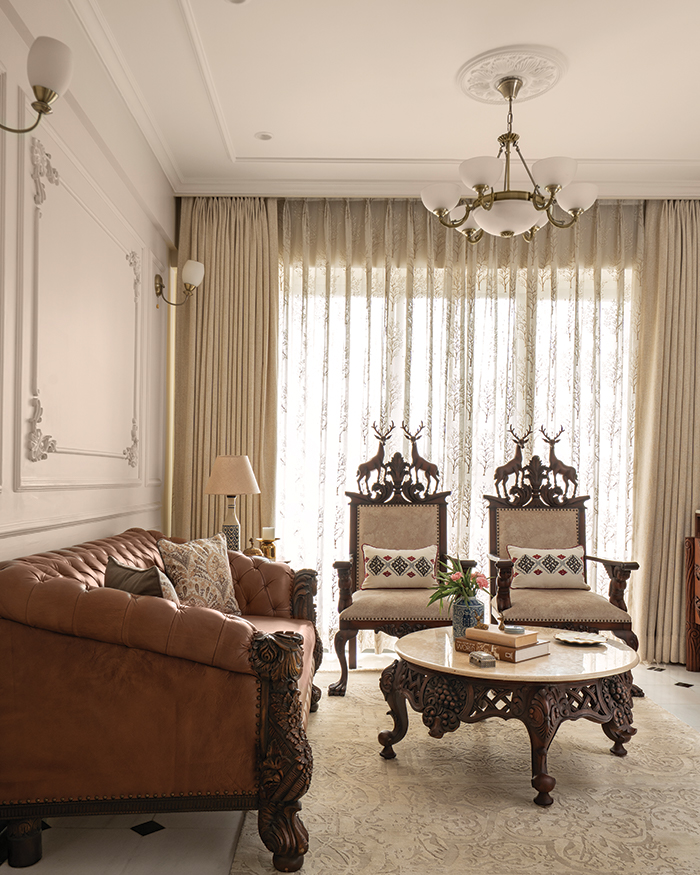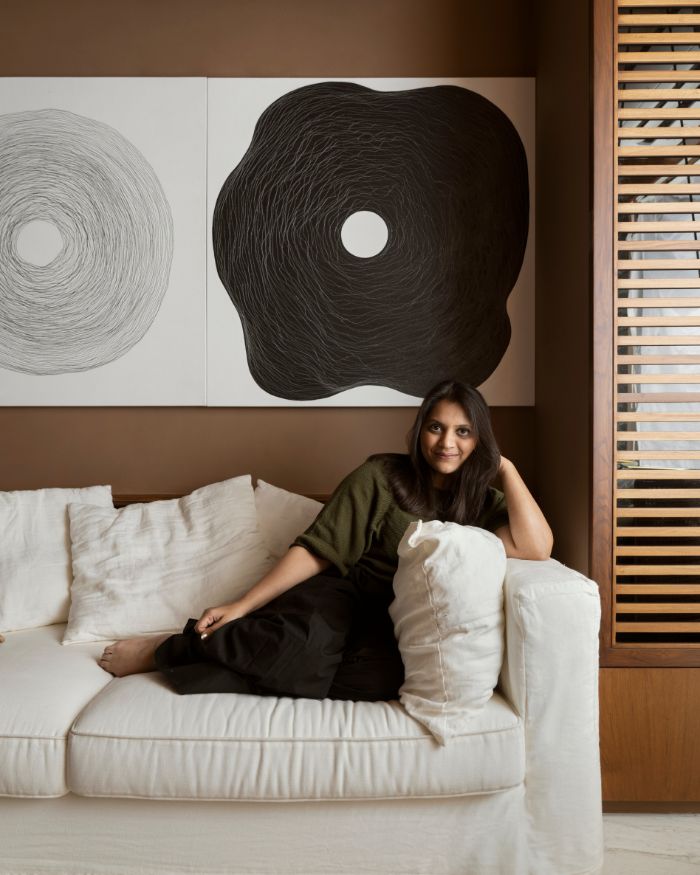The passage of time calls for moving forward, and often moving away. Every once in a while though, we come across a home that beckons you back. This home that has belonged to a family for 120 years in a quaint village of Gujarat dubbed Apdu gaam nu ghar (Our home in our native village) stands between the threshold of nostalgia with lessons in calm.
Naomy Parikh (Founder-Project Architect) and Niyati Shah (Project Architect) of their practice Doro were originally meant to restore the 1,300 sq ft space to be a quaint abode for family visits, but the 150-year old debilitating wooden structure stipulated deconstruction to rebuild it into a thoughtfully renewed space draped with more modern-functional clues yet with a sense of intentional emptiness. “The village tells a tale of two narratives: one where individuals preserve their heritage by transforming their inherited houses into cherished retreats, and the other where homes are abandoned, succumbing to the passage of time, while some adapt chaotically to the evolving lifestyle,” explain Niyati and Naomy.

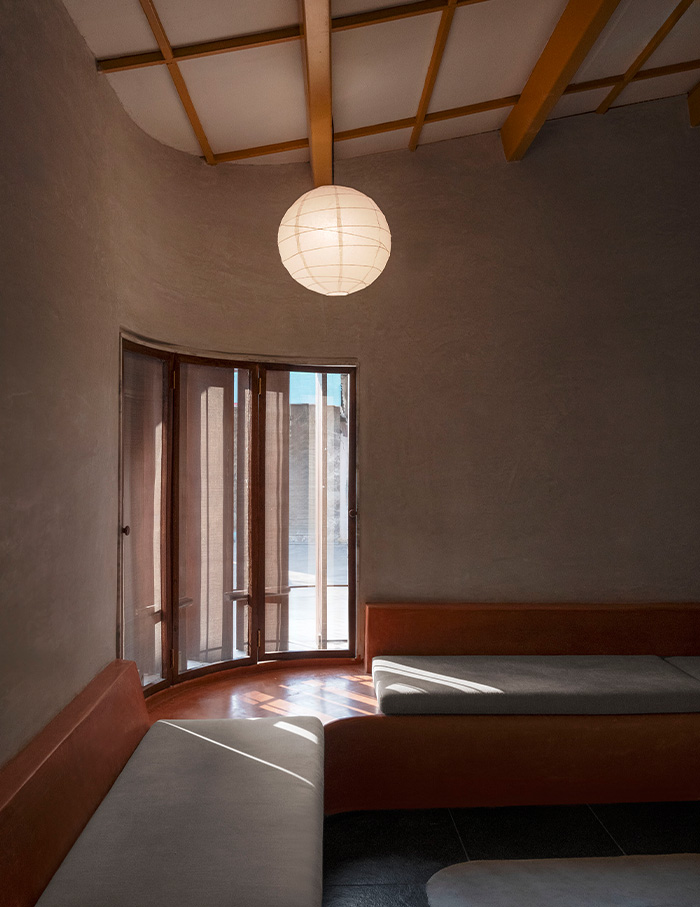
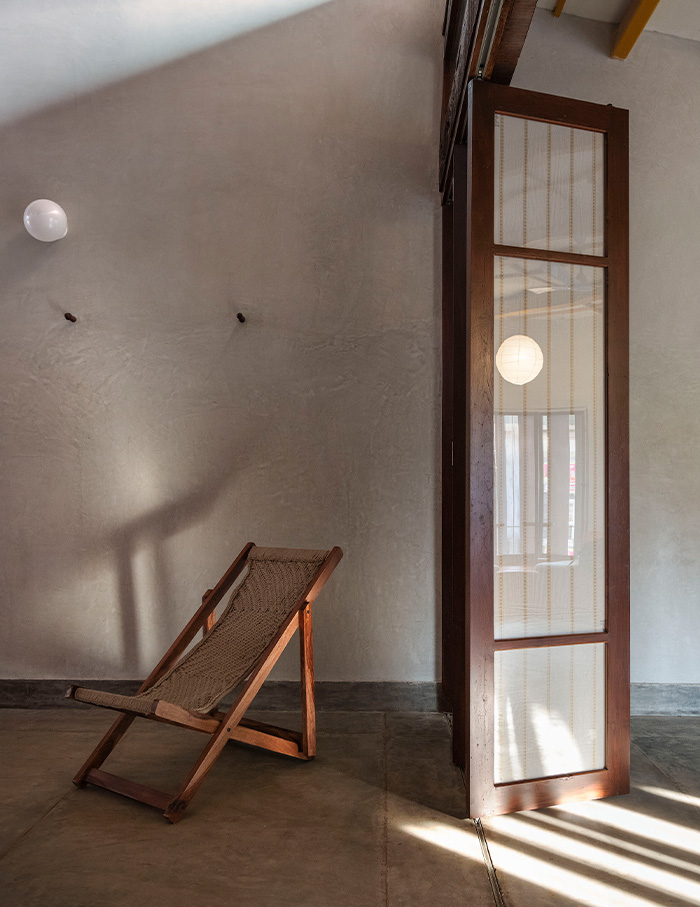
Earthy, yellow and nostalgic
“Our response was clear, departing from the previous form of the old house, we embraced larger volumes, accommodated temporal yet crucial social norms and mediated the balance between the old and the new,” state the duo. The quaint little yellow house carries with it the charm of emptiness. A space that invites thought uninhabited by chaos, wherein one can’t help but be present. Physically. Mentally. Emotionally. As they inform, the first stage of the design development began with deep diving into the old house not just through its structural parameters but also from the point of view of its residents and their ways of living.

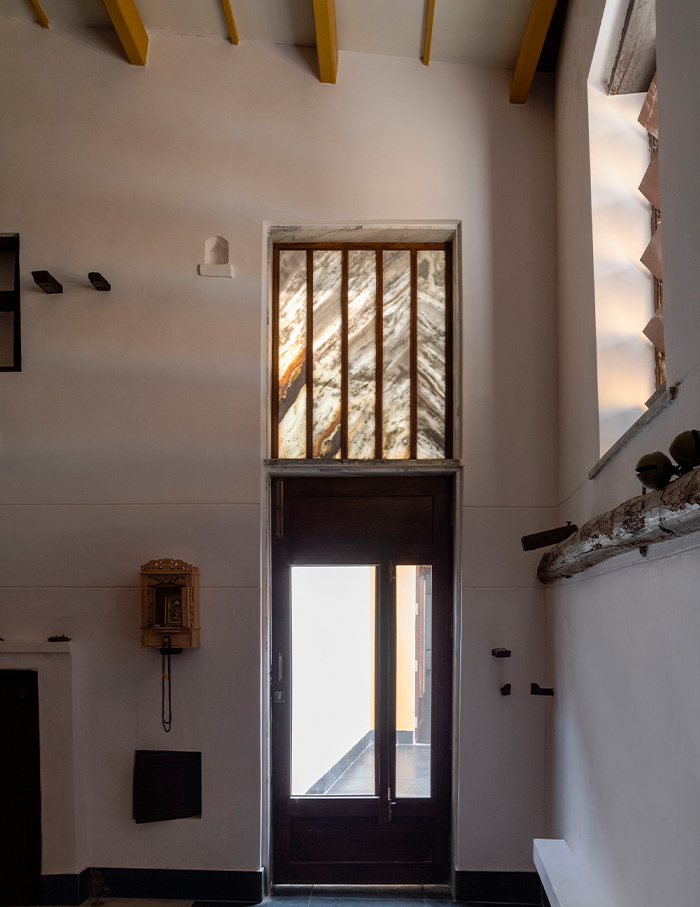
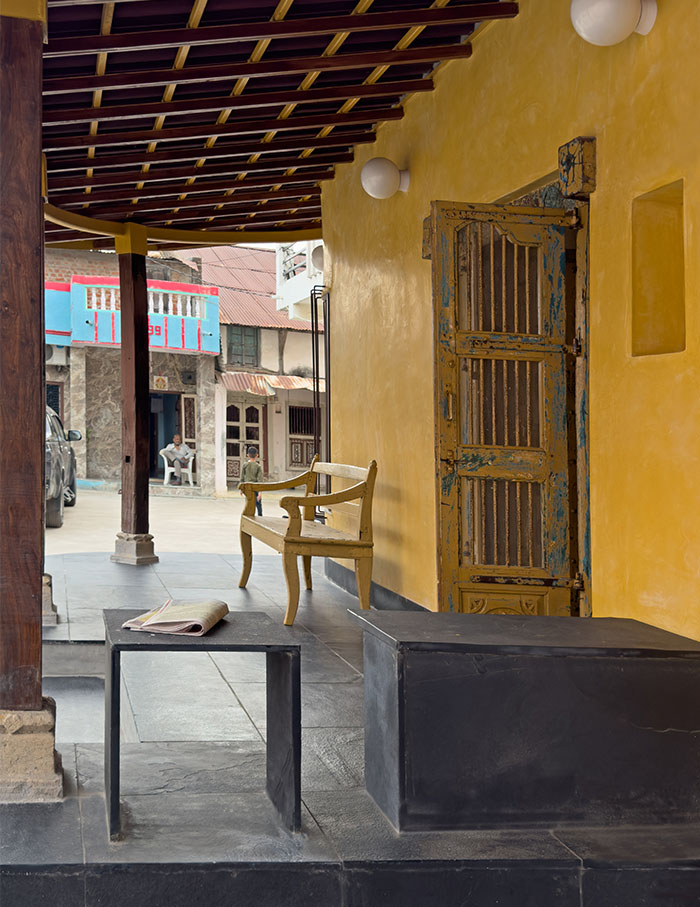
Made as most vernacular homes are, this home shares walls with the houses next door. The face of the house – the raised otla – typical of such traditional homes looks on as a semi-open verandah offering respite at the very entrance. Norm governs separate living room spaces for men and women, so the house deviates into two, courtesy of a folding partition. From a single height space with a built in seating along the longer edge to a double height space that ends with a staircase.
The open courtyard leads to the kitchen on the ground floor and the bedroom on the first floor replete with a wide platform seating offering a view through the large pivot window. The original layout featured an outer block with a single-room unit for varying purposes, most of which has been retained with a new roof and lime finish.
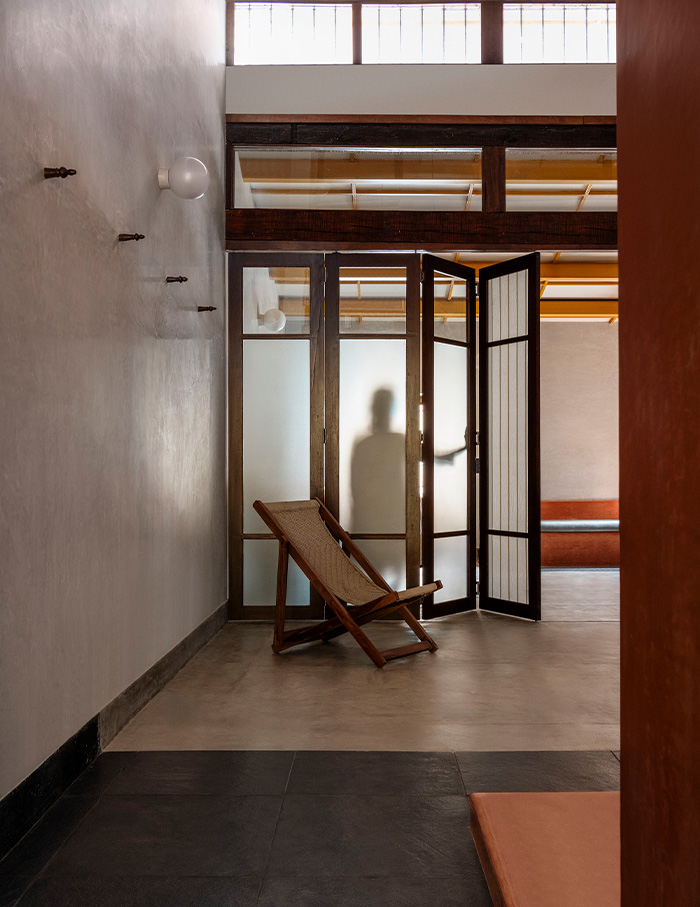
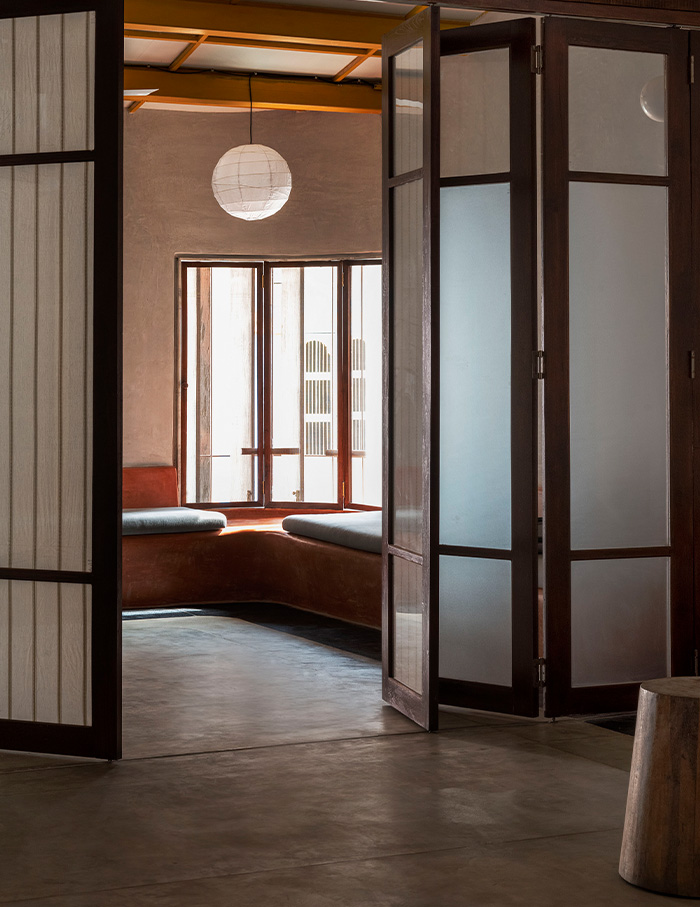
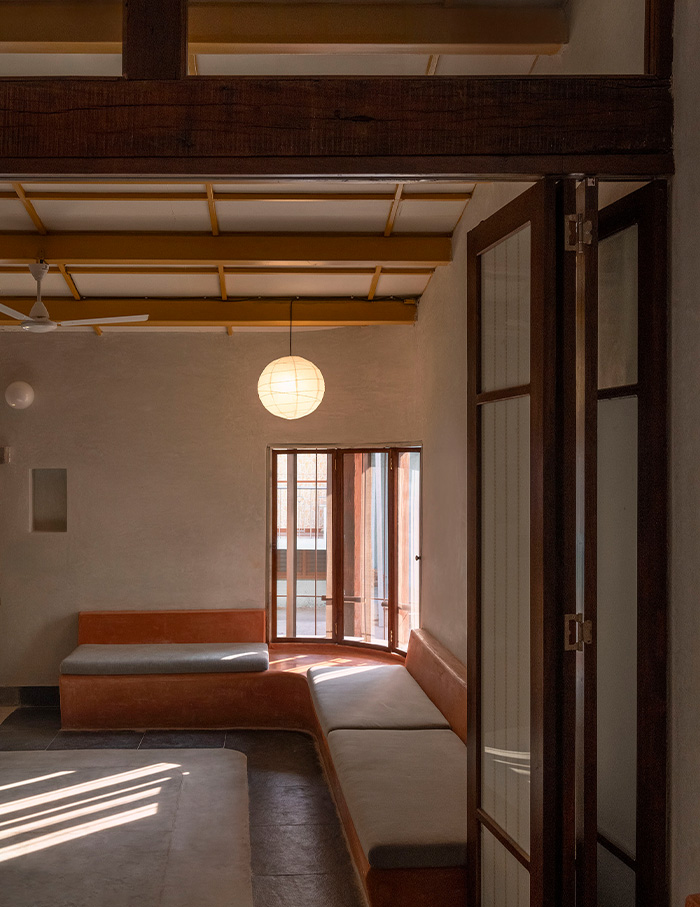
Materiality and memory
Rarely is a home so rooted in context. In colours that emerge from the nature and surroundings. “For the decisions regarding the finishes in the house, our choices were guided by an innate symbiosis between materiality and memory,” tell Naomy and Niyati, whose intrinsic yet pensive choices reflect the colour palette. Natural stone and polished cement flooring. Light grey lime for the interiors and red lime finish for the central free standing wall and seating, adding that pop of vivid.
Drenched with intention and inheritance, the home reflects traditional design principles and utilises local materials and practices. Culture and context can be found in every corner of the home, from empty space for gatherings to a setting suitable for family visits, because come what may, there is always going to be Apdu gaam nu ghar – our home in our native village.
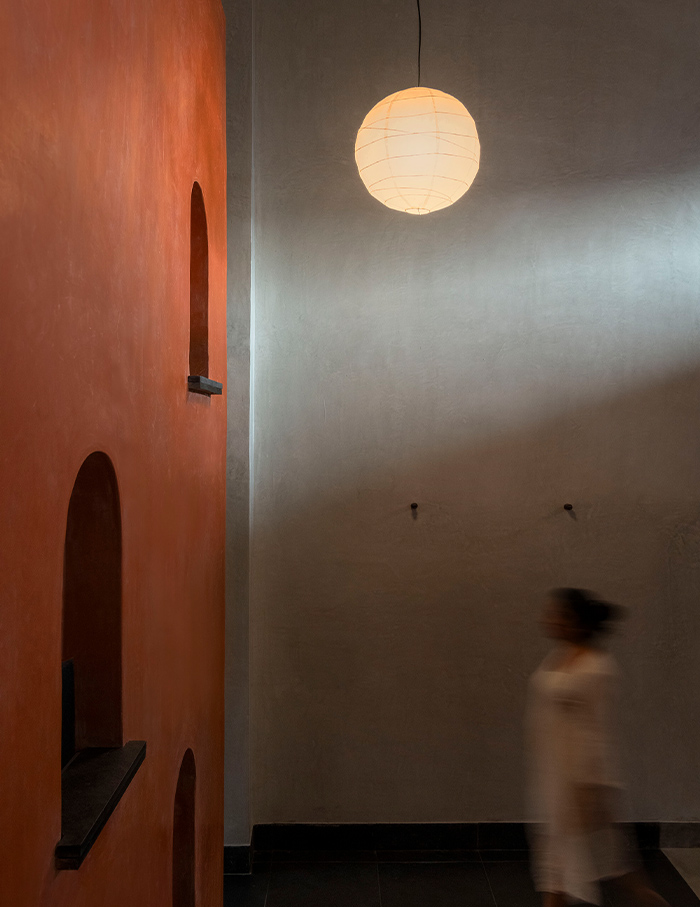
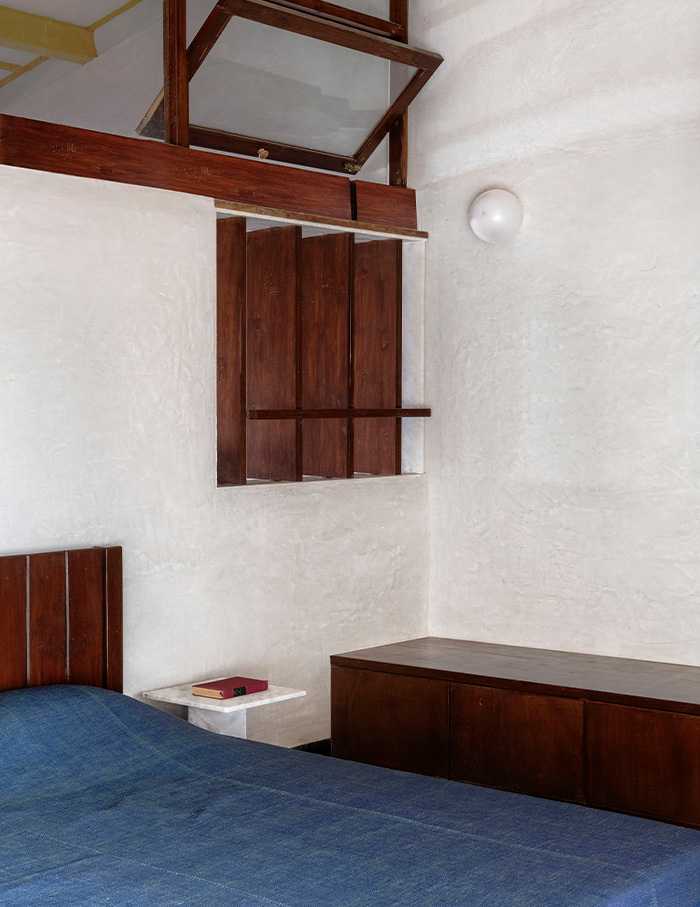
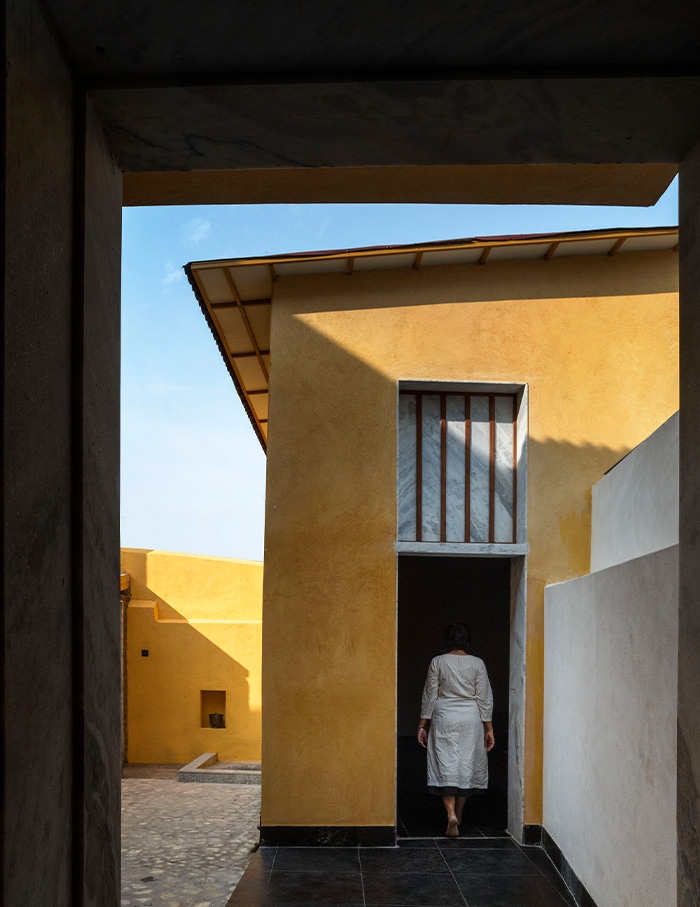
Now read: How I found wellness in wilderness at Bori Safari Lodge, Madhya Pradesh

